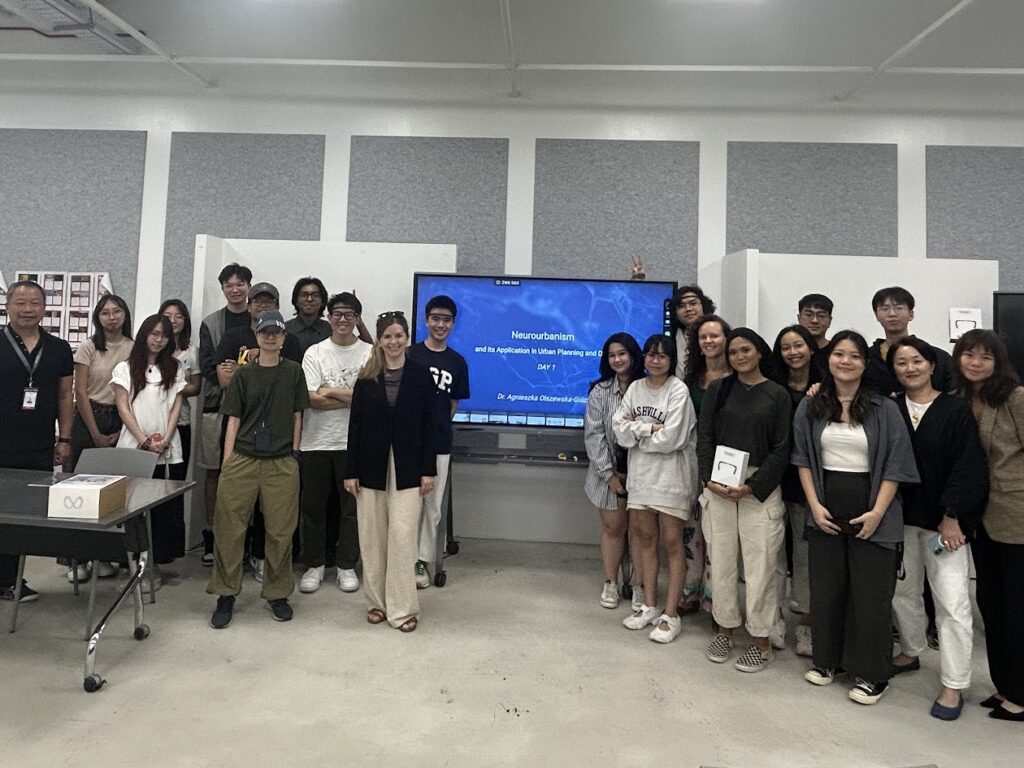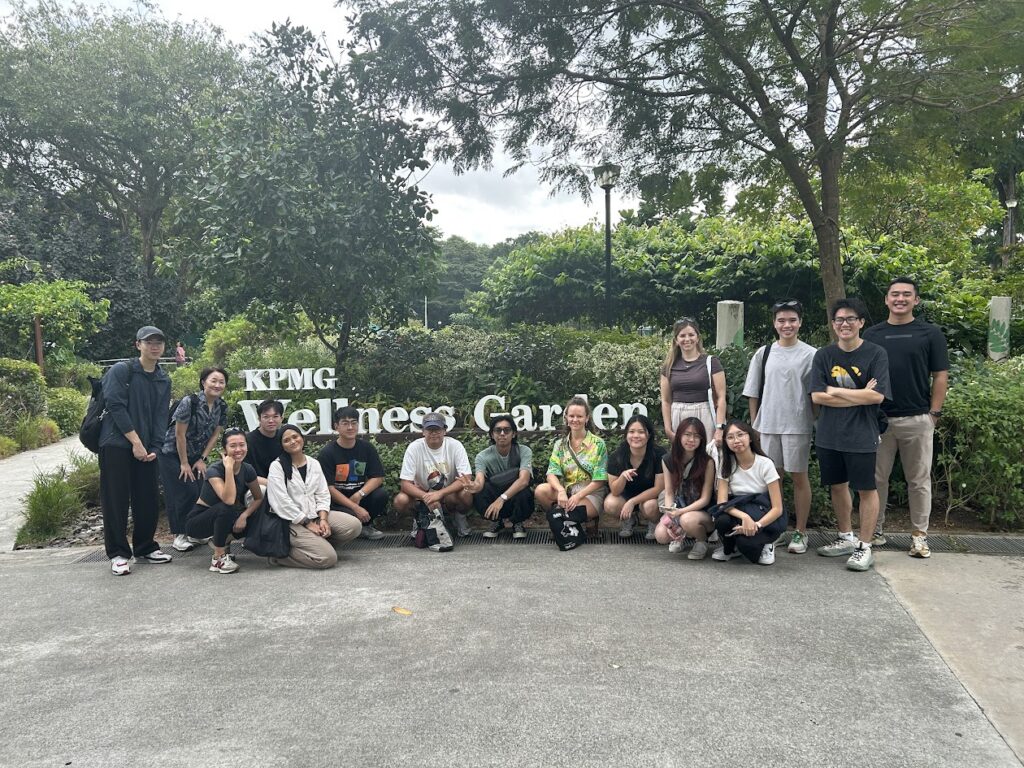On February 25-26, 2025, a group of Biophilic Design students of NAFA, gathered for an immersive workshop titled “Neurourbanism and its Application in Urban Planning and Design,” led by Dr. Agnieszka Olszewska-Guizzo. This two-day event blended theory and practice, offering participants a unique opportunity to explore how brainwave data can inform urban design. Day 1: Theory and Fieldwork Read More
Category: Singapore
Exploring Therapeutic Landscapes of Singapore: A Visit to KPMG Wellness Garden
Date: 27 February 2025 Time: 9:00 AM – 12:00 PM Location: East Coast Park NParks Office & KPMG Wellness Garden On a bright morning in late February, a group of 21 students gathered at the East Coast Park NParks Office for an insightful session on therapeutic garden design. Facilitated by NParks employees Afiq Fairuz (Landscape Architect and garden designer) and Dr. Agnieszka Olszewska-Guizzo, the Read More
Designing for Well-Being: How the Contemplative Landscape Model Transforms Urban Spaces
We’ve all felt the calming effects of spending time in nature, whether it’s a stroll through a park or a quiet moment in a garden. But not all natural environments induce the same mental health benefits. Some landscape features, when combined, are more effective than others at promoting well-being, and the Contemplative Landscape Model (CLM) Read More
Building Back Differently: The Role of CLM in Public Health Promotion through Nature-based Solutions
“The future of humanity is undoubtedly urban,” warns the UN-Habitat in their World Cities Report (2022), urging public health policies to address the growing health risks associated with urban expansion. Urban environments — characterized by traffic, pollution, noise, and overcrowding — not only create fertile ground for physical health issues but also place a significant Read More
Visiting Nature’s Embrace: A Singapore Exhibition Showcasing the Healing Effects of Nature
With support from Singapore’s National Parks Board, the Mind Art Experiential Lab of the National University of Singapore’s Yeo Boon Khim Mind Science Centre has curated the “Nature’s Embrace: A Gift to the Mind” exhibition. Open for appointment-based viewing until September 2024, the exhibition allows visitors to explore the connection between nature and mental well-being through serene visuals and calming nature melodies. Not to mention, it also provides techniques that can improve the mind-body-nature connection that you can try at home.





